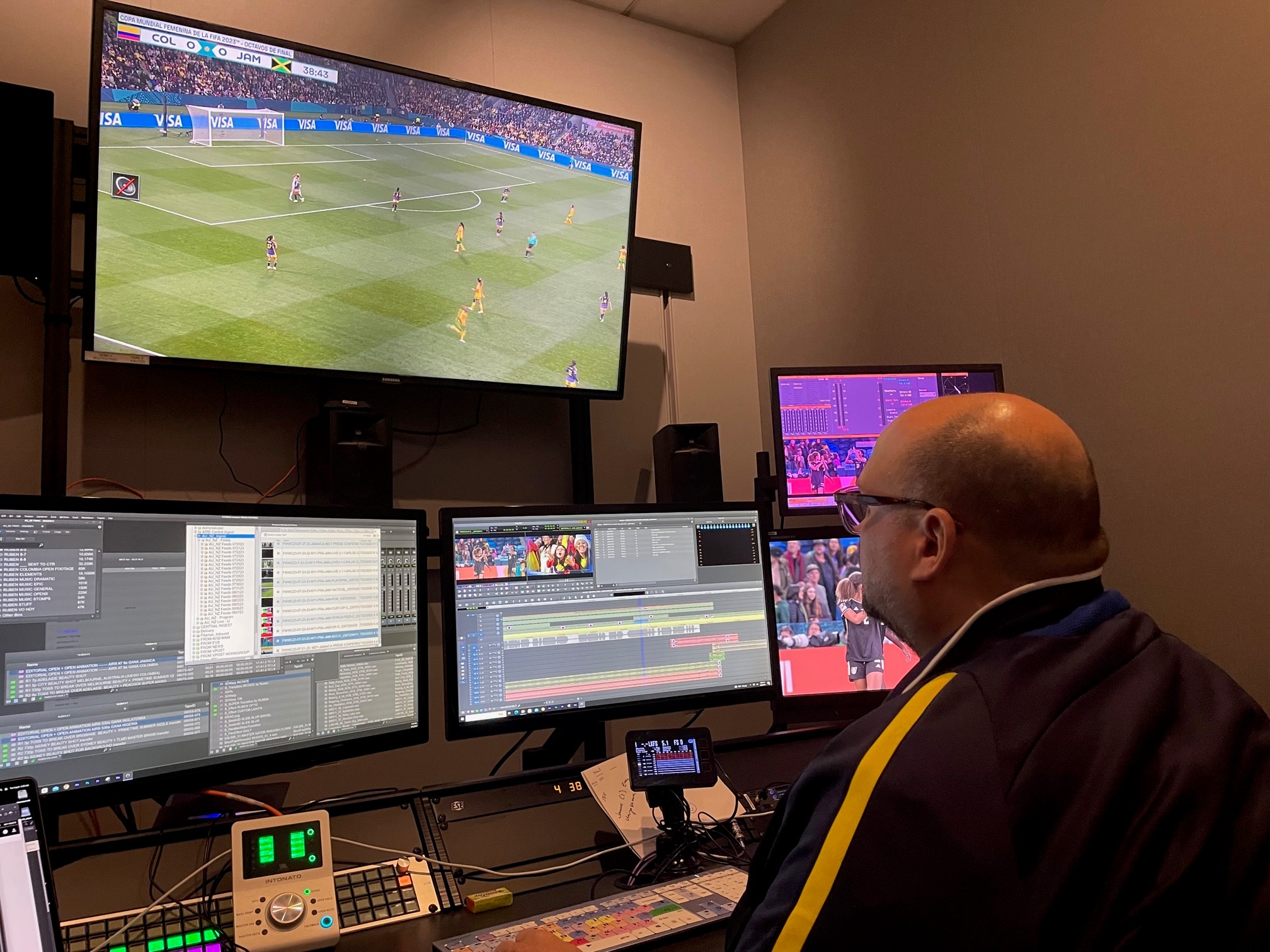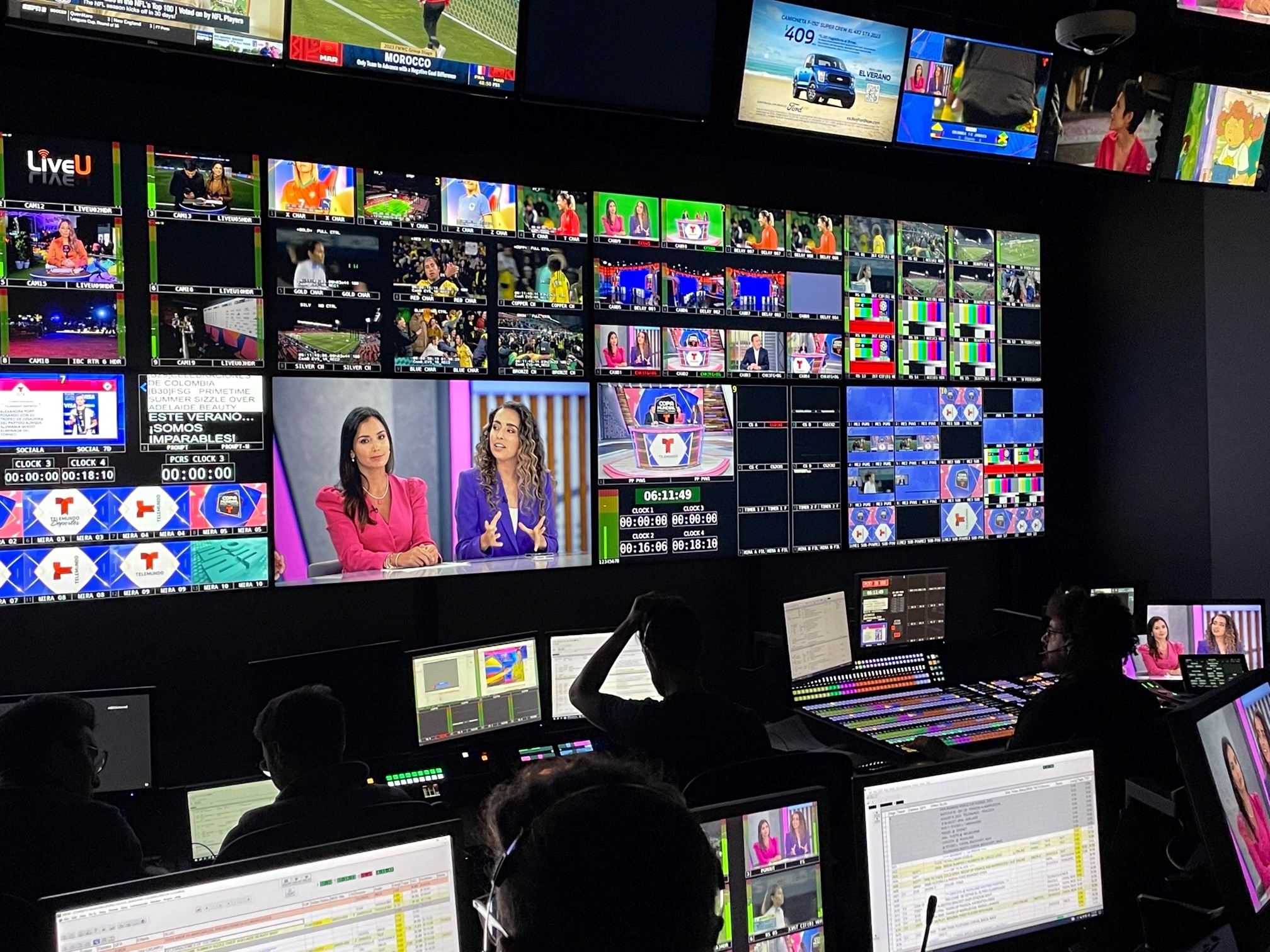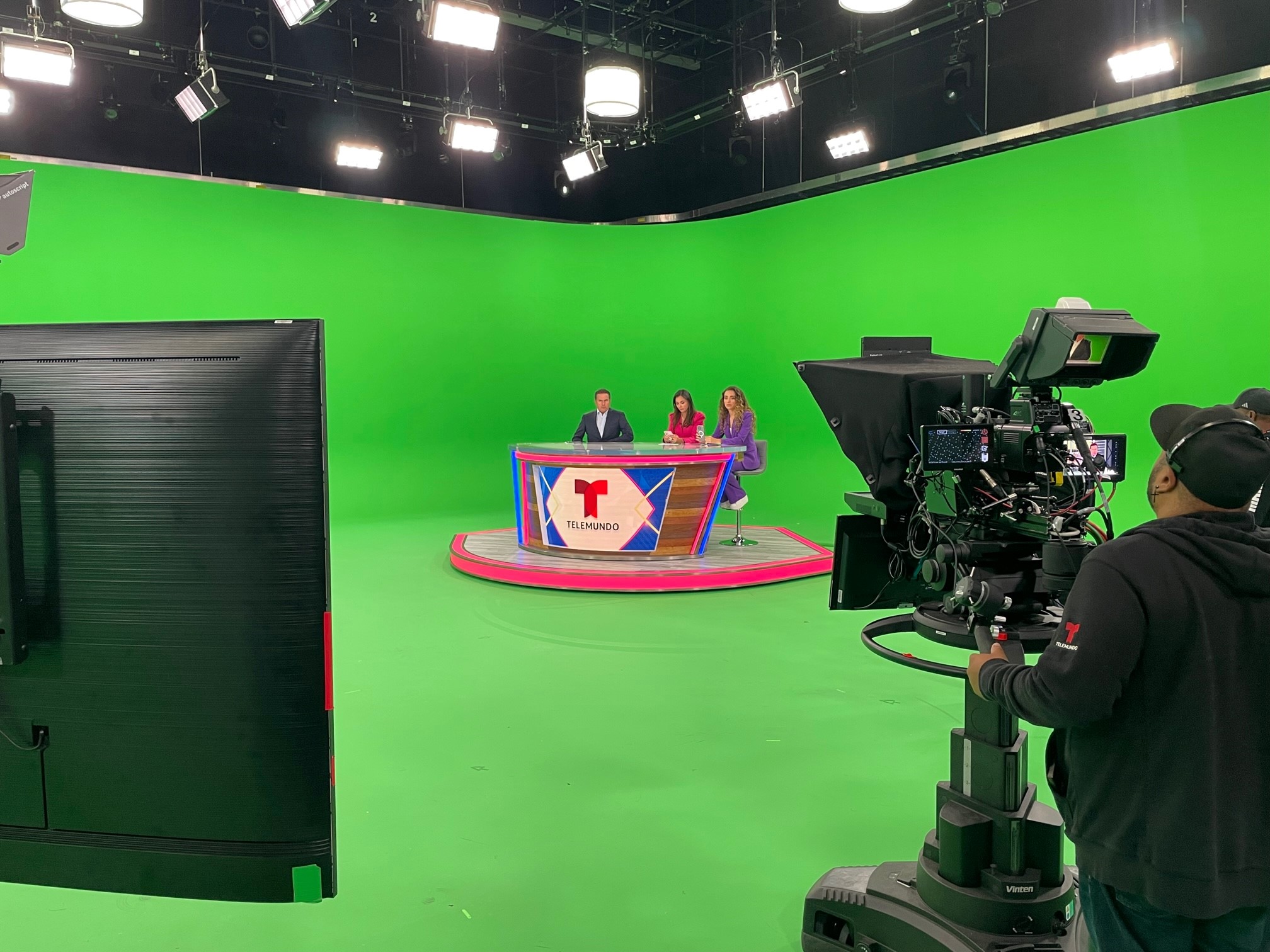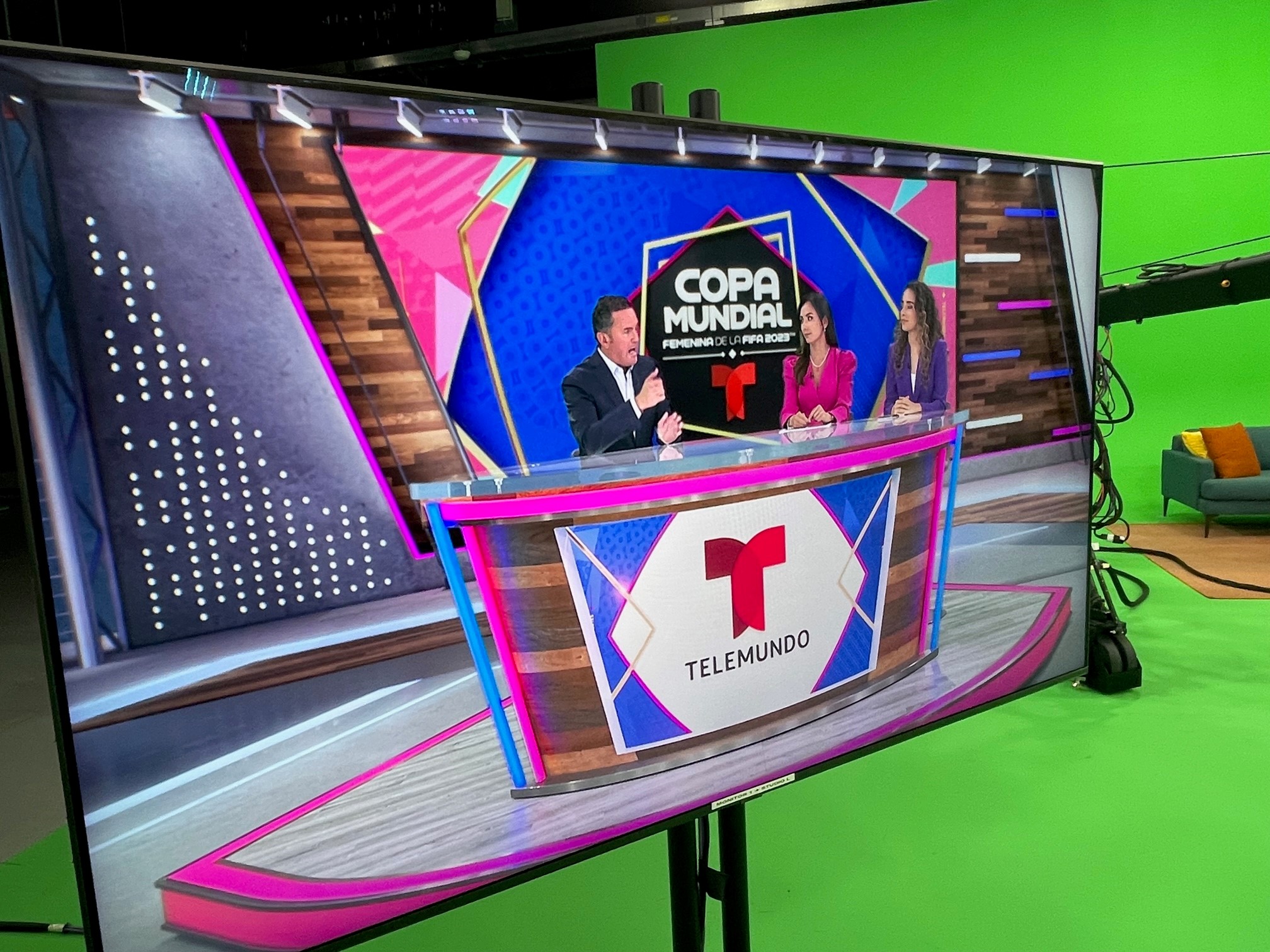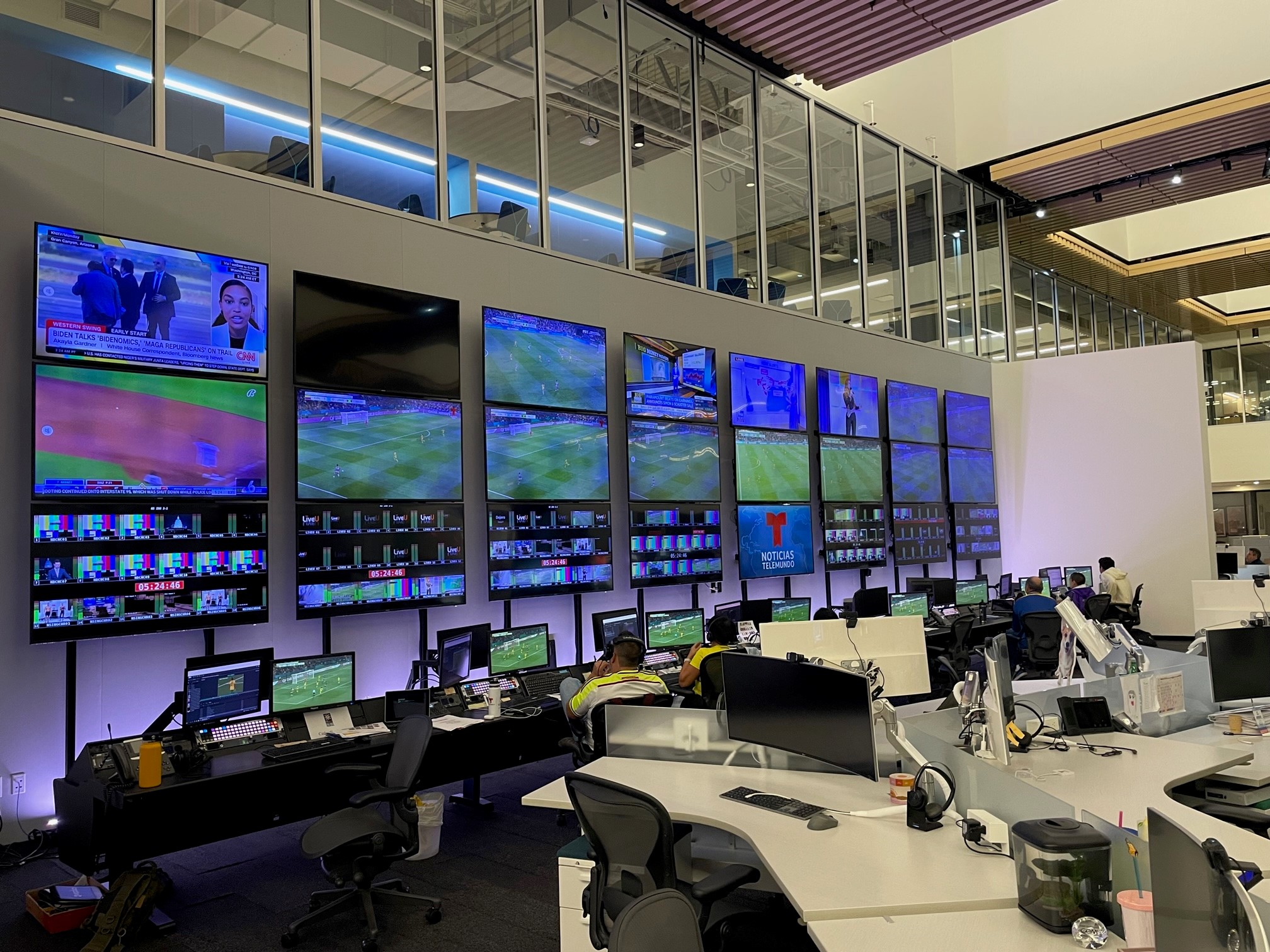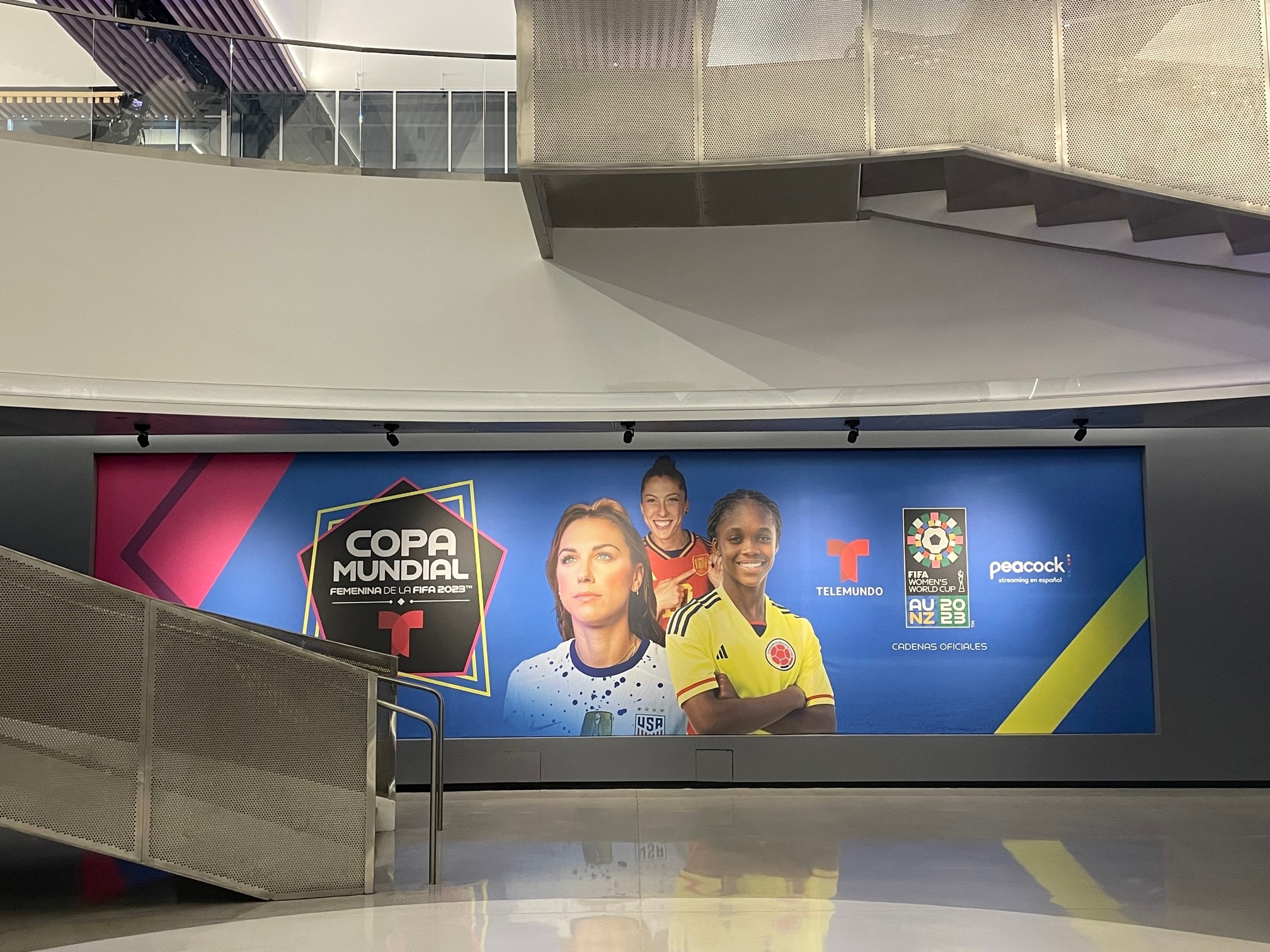FIFA Women’s World Cup: Telemundo Center Anchors Telemundo Deportes Production, Operations in Miami
Stateside facility is handling studio programming, offsite match commentary
Story Highlights
As the onsite team of Telemundo Deportes provides Spanish-language coverage of the FIFA Women’s World Cup from Australia and New Zealand, the broadcaster’s Telemundo Center in Miami is supplying hours of studio programming as well as offsite commentary for games taking place on the other side of the world. Synchronizing efforts with the crew at the stadiums and in each city has been a major hurdle to clear.
“The grind of the 14- to 16-hour time difference has been the biggest surprise,” says Telemundo Deportes SVP, Production, Robert Pardo, who’s holding down the fort in the U.S. “There have been 18 different start times during the Group Stage, so we needed to make sure that we had a control room for every single game.”
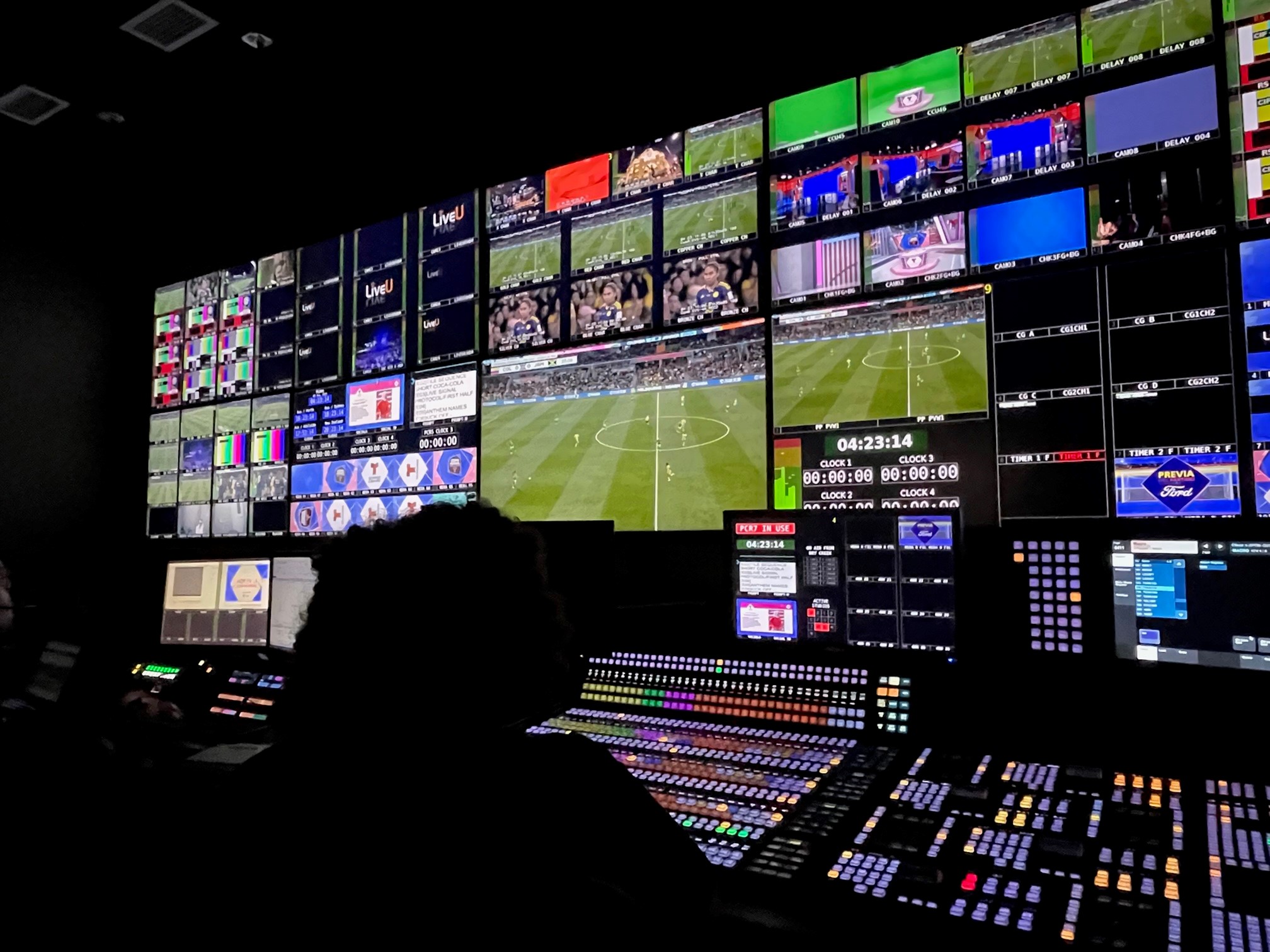
The Telemundo Deportes team at the front bench for the Colombia vs. Jamaica match in the FIFA Women’s World Cup Round of 16 on Aug. 8
Two World Cups in Six Months: Brainstorming Women’s World Cup While in Qatar
Since the previous FIFA Women’s World Cup in France in 2019, the women’s side of soccer has seen exponential growth on a global scale. With that event’s Final between the U.S. Women’s National Team and Netherlands reaching new ratings heights — an average live audience of 82.18 million and a total of 263.62 million unique viewers made it the most-watched FIFA Women’s World Cup match ever — Telemundo Deportes understood that it would need to elevate its effort for the event four years later.
“We knew in the back of our minds that this was going to be a completely different World Cup,” says Pardo. “Not only has the quality of the game come a long way, but the production bar had been set. We had to make sure that our initial assumptions and plans were validated.”
Similar to what corporate sibling NBC Sports Group endured with back-to-back Olympic Games in Summer 2021 and Winter 2022, the Telemundo Deportes is producing is second World Cup in six months. To get ahead of the arduous planning that would have to be done in a short timeframe after the 2022 Men’s World Cup in Qatar, production and operations teams brainstormed their plan during that tournament. When Lionel Messi-led Argentina lifted the trophy after their victory over France, the final steps of planning were under way by Telemundo Deportes EVP, Sports, Eli Velazquez; SVP, Content Operations, Chris Suarez-Meyers; and Pardo.
“We brought the entire team together,” says Pardo, “and made sure that the essence and spirit [shown during] the Men’s World Cup in Qatar would be reflected throughout the Women’s World Cup. This meant treating the women’s tournament with the same respect as well as having the same experts and resources.”
The Miami Plan: Multiple Control Rooms, New Virtual Studio at Facility’s Core
Because the Men’s World Cup in Qatar — all 64 matches were played in the capital of Doha — would be drastically different from the Women’s World Cup in Australia and New Zealand, greater strain would be put on the stateside crew working in Miami. On the linear side, coverage has been increased to include more live game productions and studio programming and requires the use of two production-control rooms — led by Telemundo Deportes Director, Production, Sports, Adrian Costas — and a Technical Operations Center that receives the live feeds from HBS and from five separate ENG teams via LiveU LU800 field units.
For studio programming, viewers of Telemundo Deportes have been treated to an enhanced presentation before and after matches and at halftime. After the final whistle or on non-match days, fans have recaps of the day’s action on shows like Hoy en la Copa with Miguel Gurwitz, Ana Jurka, Carlota Vizmanos, and Carlos Yustis and Zona Mixta with Veronica Rodriguez. In addition, Homenaje al Campeón will air after the Final at 8 a.m. ET on Sunday, Aug. 20 to showcase the trophy ceremony and summarize the journey of the winning team. Shows produced in Miami are being handled from two separate spaces.
“We did a refresh of our main sports studio, Studio A, by adding another level of AR just prior to the Women’s World Cup,” says Pardo. “The centerpiece is our virtual studio, Studio L, which was first deployed for Tokyo. Our real-time graphics, lighting, and fabrication teams have turned that space into what it is now.”
The commentary team of Andres Cantor, Manuel Sol, and Natalia Astrain is onsite, but, for matches not called by that team, on-air talent — Copán Álvarez, Janelly Farias, Isabella Echeverri, Jorge Calvo, Kenti Robles, Diana Rincón, Daniella López-Guajardo, Eduardo Biscayart, and Maxi Rodriguez —provide the commentary from a setup in Studio L at Telemundo Center.
“We knew that it was going to be a challenge to get all of our play-by-play commentators and analysts out there, especially given the logistics of two countries,” says Pardo. “With so many time zones, our approach was to bring it all to Telemundo Center and piece the shows together from here.”
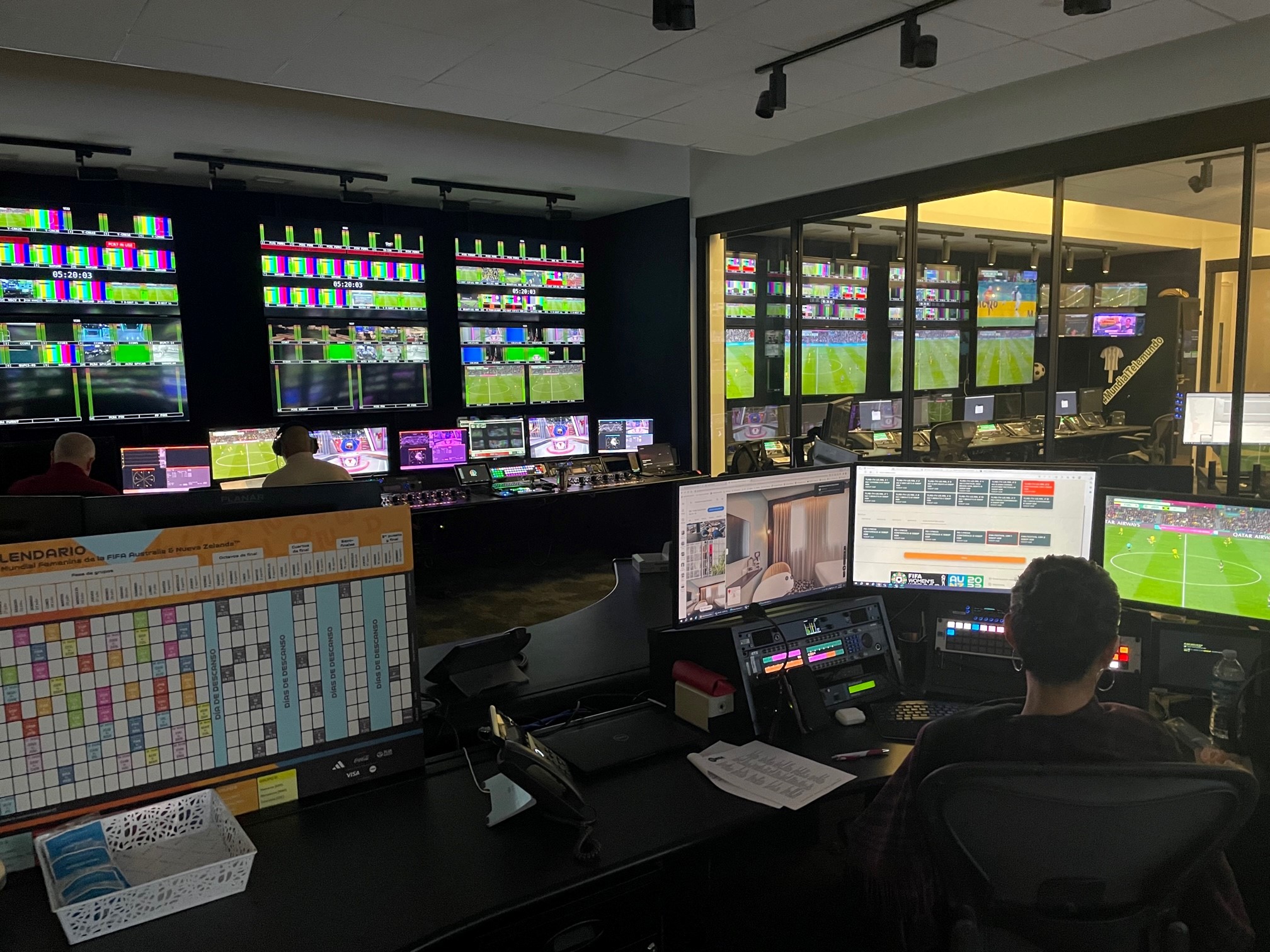
Telemundo Deportes’ Technical Operations Center is receiving video feeds from Australia and New Zealand.
On the streaming front, Telemundo is populating Peacock with full replays of the prior day’s matches, extended highlights of iconic moments, player profiles, and more — all produced from Miami.
Early-Morning Footy: Staff Rotations Accommodate Varying Kickoff Times
To meet the biggest challenge for the coverage — the extensive time difference between the U.S. and Australia/New Zealand — Pardo and the production department have implemented various protocols to handle early and late kickoffs. 250 employees are working on the FIFA Women’s World Cup coverage, but, with sports coverage still being produced for other competitions, including the upcoming Premier League season, crews are being divided up according to designated start/stop times.
“We had a rotation of three shifts,” Pardo explains, “because, about every third day, there was a game that landed within the U.S. primetime window. Since we also have our regular sports programming going on at the same time, we have two core shifts fully staffed across the day and an extra shift for those games [at night] to provide relief for some of our crews. We were able to plot it out well in advance, and everyone knew going [into this tournament] what this was going to look like.”
Building From the Beginning: 2018 FIFA Men’s World Cup in Russia Is Base for Current Ops
When Telemundo Center opened in spring 2018, the broadcaster was slowly getting its brand-new, IP-capable facility online. Shortly after its opening, the team at Telemundo Deportes had their hands full with production of the 2018 FIFA Men’s World Cup in Russia. With stadiums located hours from each other, Telemundo Center was certainly put through its paces.
“We held many meetings with HBS and FIFA,” says Pardo, “but, as with any major production, you’re not sure of the conditions you’re working with until you’re on the ground. Luckily, it went really well, and we knew that, for us, [having Telemundo Center] was a luxury.”
Sports broadcasting has undergone immense technology changes, and, with cloud-based and remote workflows taking precedence during the COVID-19 pandemic, the foundation established with Telemundo Deportes’ first large-scale endeavor in 2018 has been enhanced with new and reliable solutions.

From left: Sammy Sadovnik, Isabella Echeverri, and Diana Rincón call the match between Colombia and Jamaica
“By necessity in 2019, we were in a situation where we were doing both the Women’s World Cup and Copa América at the same time,” Pardo explains. “That was our first test with this model. In conjunction with NBC Sports and the Tokyo Olympics [in 2021], the technology has accelerated so much that it’s the new normal. On the production side, it has become very reliable and allows us to put our best talent on the most important games. As the tournament continues to wind down in the Knockout Stage, we can consolidate those efforts and bring more stories and resources to those crucial matches.”
Eyes on the Final: Dedicated Team Backs Telemundo’s Trio of Veterans
Supported by a determined and hardworking team, the trio of Velazquez, Suarez-Meyers, and Pardo are fortunate to have worked together for 25 years. For an event like the Women’s World Cup, a lot can be lost without attentive communication, but, given their longstanding relationship, each person can anticipate the moves of the other two.
“We kind of know how we’re going to answer each other’s questions,” says Pardo. “That familiarity and trust allow us to cut through some of the stresses that come with this process. “[Eli and Chris] are fantastic people and are great colleagues to work with.”
Overall, the broadcaster’s determined and hardworking production and operations teams have been putting in impressive shifts over the past three weeks. As the Final at Stadium Australia in Sydney approaches, their job will have a fitting conclusion over the next 10 days.
“A FIFA Women’s World Cup is a very complex project,” says Pardo, “so I’m extremely proud of my team. We do the best we can for a tentpole event like this, and we hope to close out this World Cup in great fashion.”
Telemundo Deportes has eight matches left on its 2023 FIFA Women’s World Cup schedule: Spain vs. Netherlands at 9 p.m. ET on Thursday, Aug. 10; Sweden vs. Japan at 3:30 a.m. Friday, Aug. 11; Australia vs. France at 3 a.m. and England vs. Colombia at 6:30 a.m. Saturday, Aug. 12; two Semifinal matches at 4 a.m. Tuesday, Aug. 15 and at 6 a.m. Wednesday, Aug. 16; a third-place match at 4 a.m. Saturday, Aug. 19; and the Final at 6 a.m. Sunday, Aug. 20.
